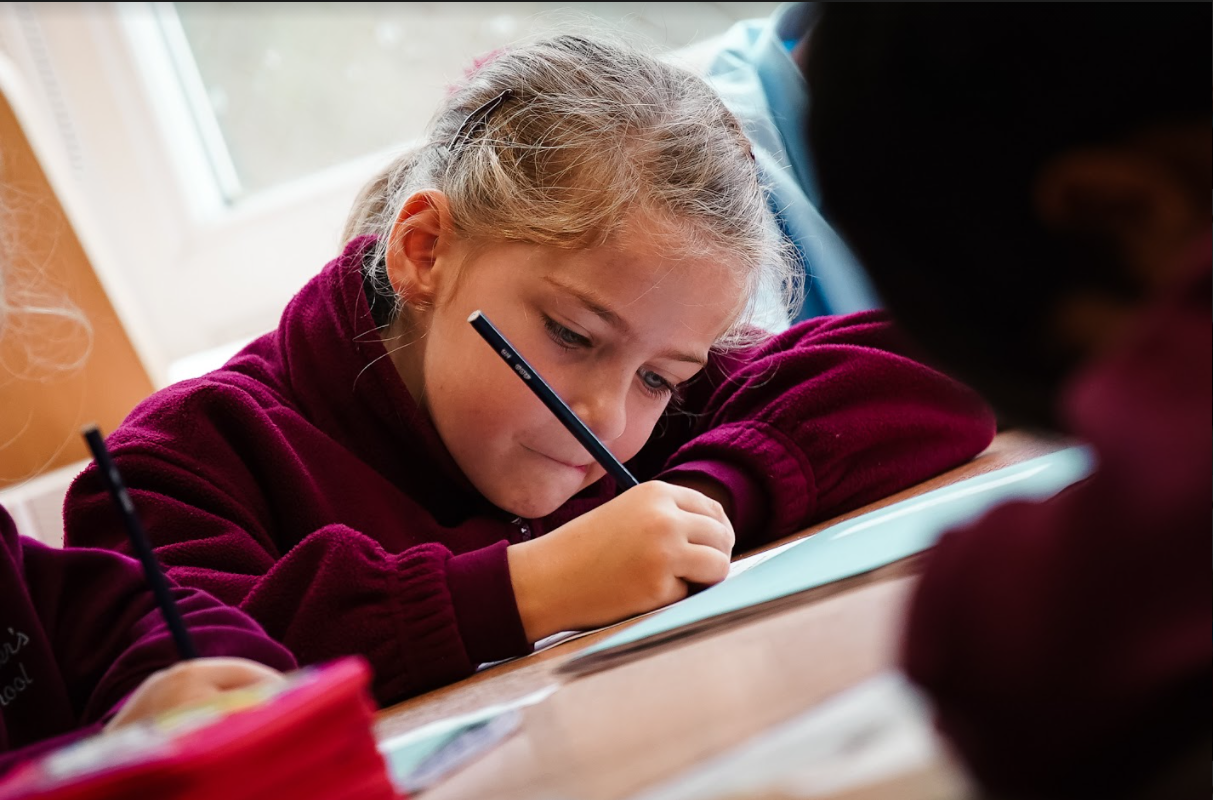Writing
At St. Peter’s, we intend to nurture pupils who are enthusiastic, lively writers with a desire to express themselves through their 'writer’s voice'. Children will leave our school fully equipped with the literacy skills to achieve their dreams in future life.
Writing is taught from a topic-based stimulus to ensure all children have the best possible understanding of content, to enable a greater focus on writing skills. Children will experience an abundance of quality, engaging texts that stimulate writing and encourage adventurous vocabulary and phrasing. Other resources such as music videos and television are chosen for their high vocabulary, interest level and challenge.
Shared and modelled writing is initiated by highly motivated teachers with excellent subject knowledge, who inspire their pupils to achieve their potential. Grammatical skills are taught and embedded within this framework and are built up through repetition within the units, with children applying these skills in the writing activities provided.
Great emphasis is placed upon phonics-based literacy from the outset, and you can read more specific information about our Phonics scheme by using the links on this page. Initially, spelling patterns are linked to the phonics phases, however as children progress from Year 2, common spelling patterns are taught in lessons in line with the National Curriculum expectations. The Spelling Shed scheme is used to help children develop strategies to embed spelling skills.
Handwriting is concerned with individual expression and the conveying of meaning through fluent composition. The principal aim is that handwriting becomes an automatic process which frees pupils to focus on the content of the writing. Through the teaching of handwriting, we are seeking the development of a clear, legible and fluent style.
In all year groups the majority of English work is done in the class, with work being differentiated to match the needs of the children, where required. Guided and supported work, alongside interventions, is used to support children who are not on track to meet age-related expectations or progress targets. Children’s writing is assessed through teacher assessment in line with the National Curriculum.

